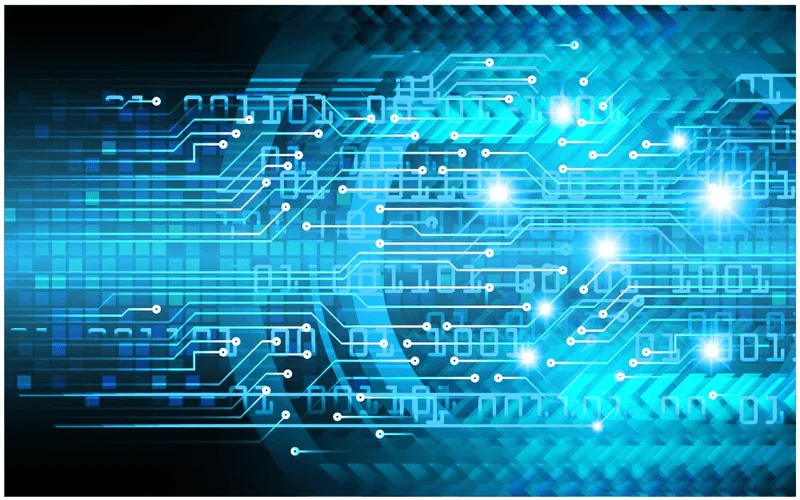The major advantage of SMP methods is their ability to extend distributed computing definition computational pace while sustaining the simplicity of a single processor system. Distributed computing techniques recruit multiple machines that work in parallel, multiplying processing potential. This methodology of load balancing results in faster computational pace, low latency, high bandwidths and maximal resource use of underlying hardware.
Parallelization Technique And Performance
To compare performance, such as when calculating effectivity of a parallel program, we use wall-clock time as an alternative of clock ticks, because it contains all real-time overheads like reminiscence latency and communication delays, that can not be instantly translated to clock ticks. Distributed computing is sometimes also recognized as distributed methods, distributed programming or distributed algorithms. In distributed systems, the person processing methods don’t have entry to any central clock. In parallel systems, all the processes share the same grasp clock for synchronization. Since all the processors are hosted on the same physical system, they don’t want any synchronization algorithms. There are limitations on the number of processors that the bus connecting them and the reminiscence can handle.

What Are The Types Of Distributed Computing Architecture?
Its sturdy knowledge storage and compute services, combined with its cutting-edge machine learning and AI capabilities, make it a compelling alternative for companies seeking to leverage knowledge to drive innovation. This transparency simplifies the person interface and makes the system easier to make use of. It also signifies that changes to the system, such as the addition or elimination of nodes, can be made with out affecting the consumer experience. Distributed computing methods are well-suited to organizations which have various workloads. Developers can change or reconfigure the system entirely as workloads change.

Kinds Of Distributed Computing Architecture
In parallel computing systems, all processors share a single master clock. Parallel computing sometimes requires one pc with a number of processors. Distributed computing, then again, entails several autonomous (and often geographically separate and/or distant) pc techniques engaged on divided tasks. In distributed computing, you design functions that can run on several computers as a substitute of on just one computer.

Grid Computing, Distributed Computing And Cloud Computing
Application checkpointing prevents the lack of all the computation done so far in case of system failure or shutdown, making it a important component of distributed computing methods. It makes it possible to arbitrarily shut down cases of a parallel computing system and transfer workloads to other situations. By dividing these duties into smaller sub-tasks and processing them concurrently, parallel computing drastically reduces the time required for rendering and processing video results. Film studios use supercomputers and render farms (networks of computers) to shortly create gorgeous visual results and animation sequences. Without parallel computing, the spectacular visible effects we see in blockbuster films and high-quality video games can be nearly impossible to realize in sensible timeframes.
- In parallel computing systems, all processors share a single grasp clock.
- This decentralized technique is used to deal with jobs too advanced for single-node techniques, defined Shashwat Kapoor, a data engineer at Lyra Health.
- In the financial providers sector, distributed computing is enjoying a pivotal position in enhancing efficiency and driving innovation.
- Finally, I/O synchronization in Android software improvement is more demanding than that discovered on typical platforms, although some ideas of Java file management carry over.
In parallel computing, effectivity refers to the proportion of accessible sources which would possibly be actively utilized during a computation. It is decided by comparing the precise resource utilization towards the peak performance, i.e., optimum resource utilization. Therefore, we need to make the most of the available capacity by utilizing parallel computing methodologies. The objective is to cover reminiscence latency (the time it takes for the first data to reach from memory), increase memory bandwidth (the amount of information transferred per unit of time), and improve compute throughput (the tasks performed in a clock tick). IBM Spectrum Symphony software program delivers powerful enterprise-class management for operating compute-intensive and data-intensive distributed purposes on a scalable, shared grid. Parallel computing refers to many kinds of devices and computer architectures, from supercomputers to the smartphone in your pocket.
Hybrid methods mix elements of shared and distributed reminiscence architectures. They sometimes function nodes that use shared reminiscence, interconnected by a distributed reminiscence network. Each node operates as a shared memory system, whereas communication between nodes follows a distributed memory mannequin. Distributed reminiscence systems are generally used in high-performance computing (HPC) environments, corresponding to supercomputers and large-scale clusters. They are appropriate for applications that could be decomposed into unbiased tasks with minimal inter-process communication, like large-scale simulations and information analysis.
We primarily focus on how to write the Kokkos kernel for the vector-matrix product to know how these factors are applied for different architectures. Various coding frameworks, corresponding to SYCL, CUDA, and Kokkos, are used to put in writing kernels or capabilities for different architectures. IBM Z and Cloud Modernization Stack combines the facility of IBM Z and the energy of Red Hat OpenShift Container Platform and delivers a modern, managed as-a-service mannequin to enrich your most resilient manufacturing workloads. Implementing encryption protocols for information at relaxation and in transit is important. Additionally, using access control mechanisms ensures that only licensed personnel can access sensitive knowledge, thereby enhancing security.
In this part, we consider the performance of Specx on four numerical purposes. To create a mirrored copy of the first knowledge, we will use Kokkos’ create_mirror_view() function. This perform generates a mirror view in a specified execution house (e.g., GPU) with the identical data kind and dimensions as the first view. Strong scaling efficiency is affected by the ratio of time speaking to the time spent computing. Peak efficiency assumes that each processor core executes the utmost possible FLOPs during each clock cycle.
Its Resilient Distributed Datasets (RDDs) enable for fault-tolerant processing, making certain information integrity even in the event of node failures. While automated parallelization isn’t all the time good and may not achieve the identical degree of efficiency as guide parallelization, it is a powerful device within the palms of developers. It allows them to leverage the benefits of parallel computing without needing intensive knowledge about parallel programming and hardware architectures.
The major challenge in distributed memory techniques is the complexity of communication and synchronization. Programmers must explicitly handle information distribution and message passing, often utilizing libraries such as MPI (Message Passing Interface). Grid computing is used for tasks that require a large amount of computational resources that can’t be fulfilled by a single laptop but do not require the excessive performance of a supercomputer. It’s commonly utilized in scientific, mathematical, and academic analysis, in addition to in large enterprises for resource-intensive tasks. Cluster computing is a sort of parallel computing the place a bunch of computer systems are linked collectively to kind a single, unified computing useful resource. These computer systems, generally identified as nodes, work collectively to execute tasks extra quickly than a single computer might.
Distributed computing is when multiple interconnected laptop systems or units work collectively as one. This divide-and-conquer strategy permits a number of computers, generally recognized as nodes, to concurrently solve a single task by breaking it into subtasks whereas communicating throughout a shared inside network. Rather than moving mass quantities of knowledge by way of a central processing heart, this mannequin permits particular person nodes to coordinate processing energy and share data, resulting in faster speeds and optimized performance. Finally, Grid and Cloud computing are each subset of distributed computing.
GFS is designed to provide environment friendly, reliable entry to knowledge using large clusters of commodity hardware. It achieves this through replication – storing multiple copies of knowledge throughout completely different machines – thereby ensuring data availability and reliability even within the occasion of hardware failure. Similarly, in healthcare, distributed computing is getting used to investigate patient data from a quantity of sources. This permits healthcare suppliers to gain a holistic view of a patient’s well being and ship more personalised and efficient care. Moreover, distributed computing is enabling real-time monitoring and analysis of affected person knowledge, which might help in early detection and prevention of ailments.
All processors concerned in parallel computing share the identical reminiscence and use it to speak with each other. Resource allocation and load balancing can present a challenge for distributed computing systems. Parallel computing often requires synchronization and communication mechanisms between processors to make sure consistency. Using these mechanisms can elevate overheads, and create issues with community latency. Parallel computing is used to increase laptop performance and for scientific computing, whereas distributed computing is used to share sources and enhance scalability.
Parallel processing, or parallelism, separates a runtime task into smaller parts to be carried out independently and concurrently using a couple of processor. A pc network or pc with a couple of processor is usually required to reassemble the information once the equations have been solved on a quantity of processors. Grid computing includes a distributed architecture of a quantity of computer systems linked to resolve a posh problem. Servers or PCs run impartial tasks and are linked loosely by the web or low-speed networks.
Transform Your Business With AI Software Development Solutions https://www.globalcloudteam.com/ — be successful, be the first!
